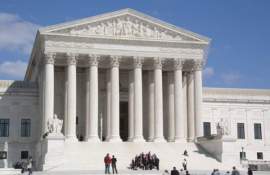
Wisconsin v. Illinois

Wisconsin v. Illinois: The Background
Wisconsin v. Illinois is a famous case heard before the United States Supreme Court on April 23rd of 1928. Also referred to as the Chicago Sanitary District Case, Wisconsin v. Illinois, held that the equitable power of the United States may be utilized to place positive action on one state in situations where non-action would result in damage to the interests of other districts or states.
Because of Article Three of the United States Constitution, Wisconsin v. Illinois was heard under the Court’s original jurisdiction because it involves a conflict between two states. Chief Justice William Taft offered the opinion before the unanimous court.
Wisconsin v. Illinois: The Particulars
The issues surrounding Wisconsin v. Illinois started when the city of Chicago was increasingly diverting Great Lakes waters to carry sewage through an established drainage canal. The state of Illinois claimed that the increasing amount of diverted waters was necessary because of the city’s growth. The state of Wisconsin; however, disagreed with this notion and claimed that the diversion was lowering lake levels, thereby disrupting its transportation abilities and facilities.
After several hearings, a special judicial official was assigned by the Supreme Court of the United States to evaluate the facts of the matter, including the maximum diversion at a level below that necessary for utilization of the drainage canal system.
When the case was brought before the United States Supreme Court, Chief Justice Taft’s opinion finally settled the question of the authority of the federal government to intervene to enforce actions by a state in such a situation. Taft stated that when deciding the controversy between states, the authority of the federal court system to enjoin the continued perpetration of the guilty party inflicted on the defendant, embraces the authority to require measures to be taken to eliminate the underlying conditions.
The case of Wisconsin v. Illinois was decided on January 14th of 1929 and held that the equitable power of the United States Federal Government can be utilized to impose positive action on the states in situations where non-action would result in damage to the interests of other states.
The associate justices involved in the case of Wisconsin v. Illinois included: Oliver Holmes Jr; Willis Van Devanter; James McReynolds; Louis Brandeis; Pierce Butler; Harlan Stone; Edward Sanford and George Sutherland. The case of Wisconsin v. Illinois was decided in a unanimous fashion.



















